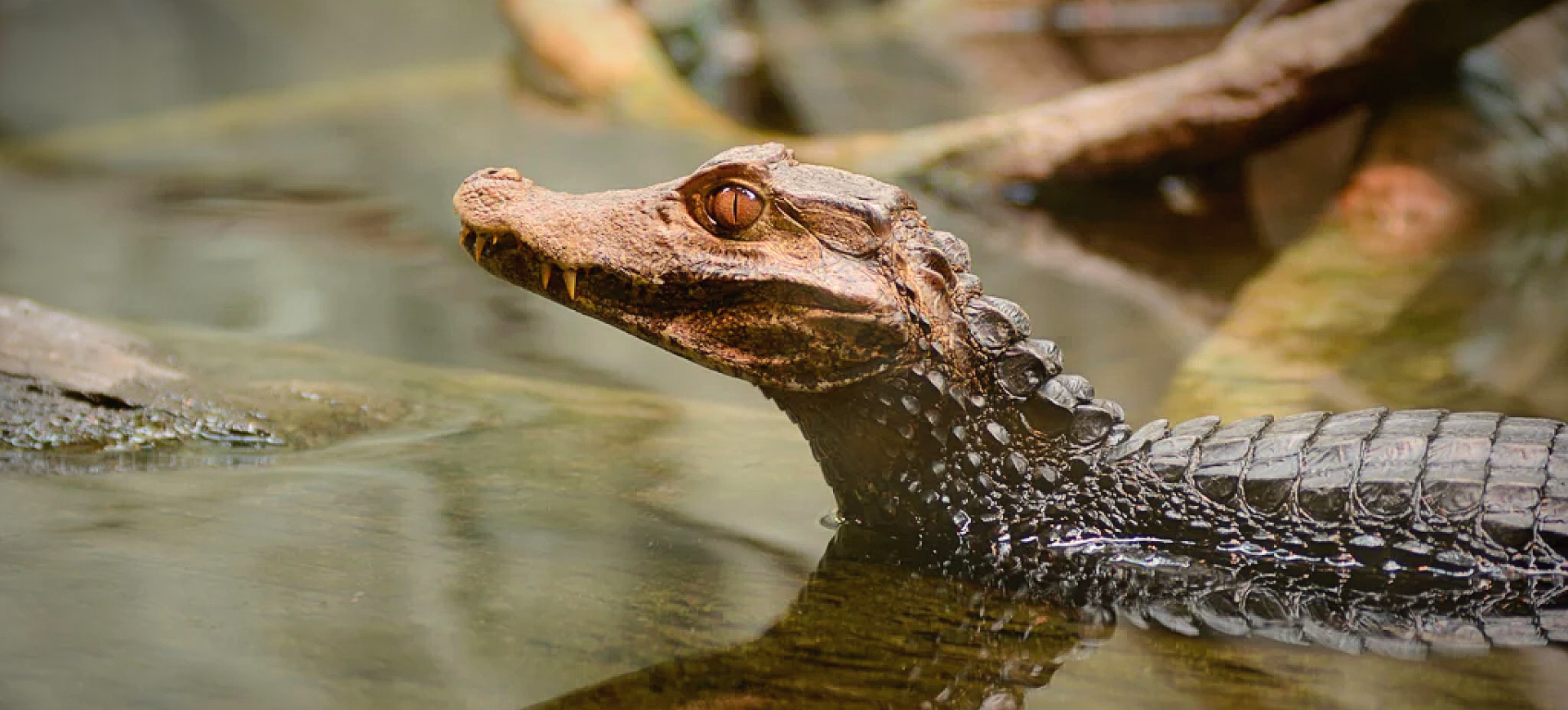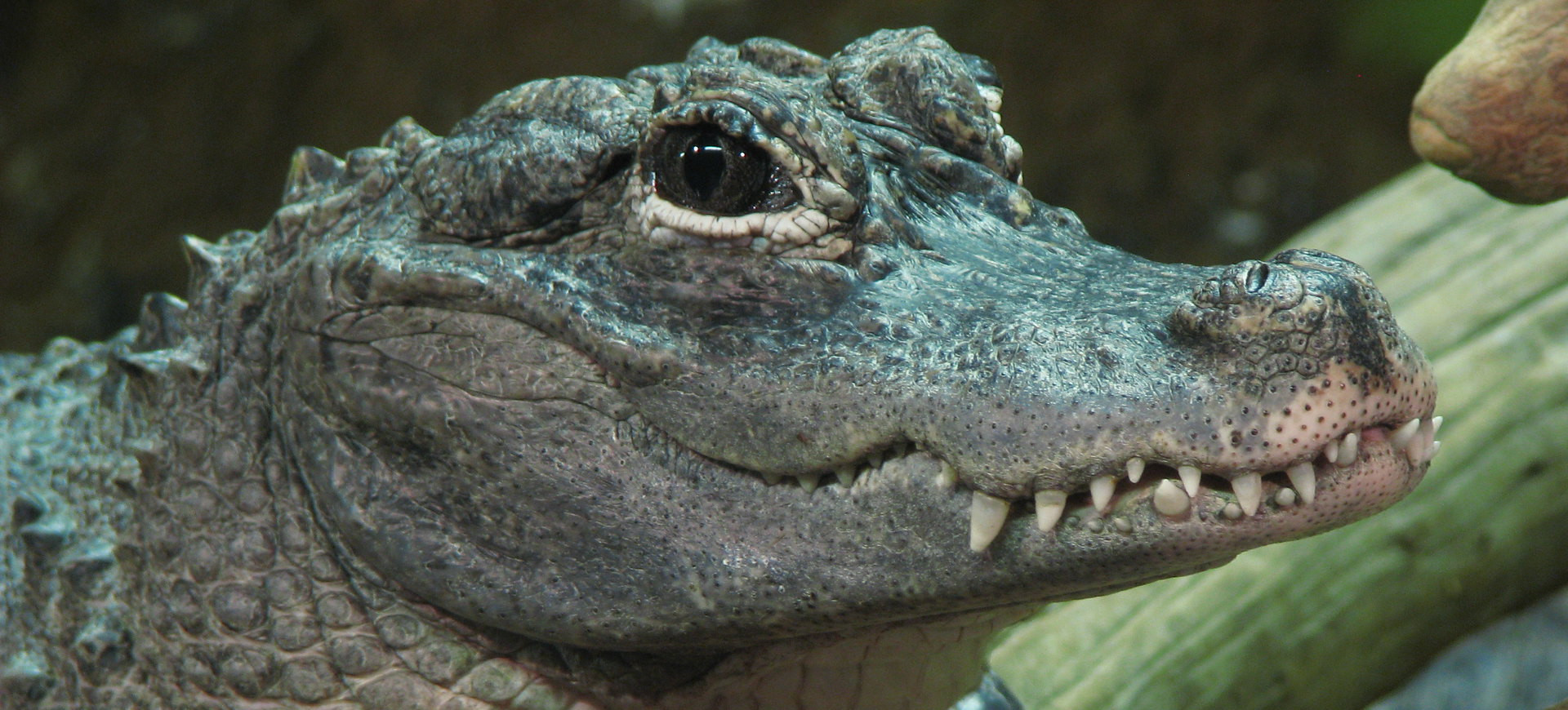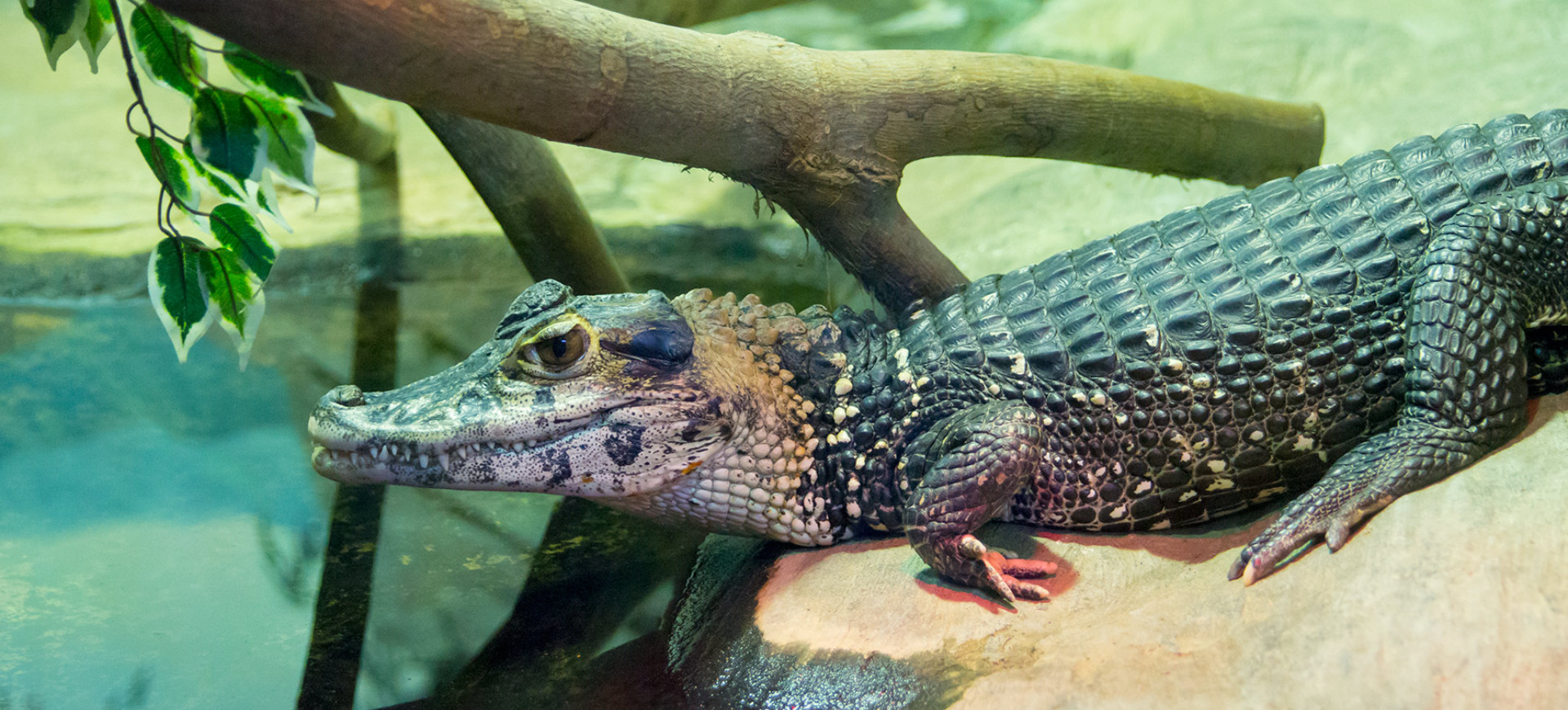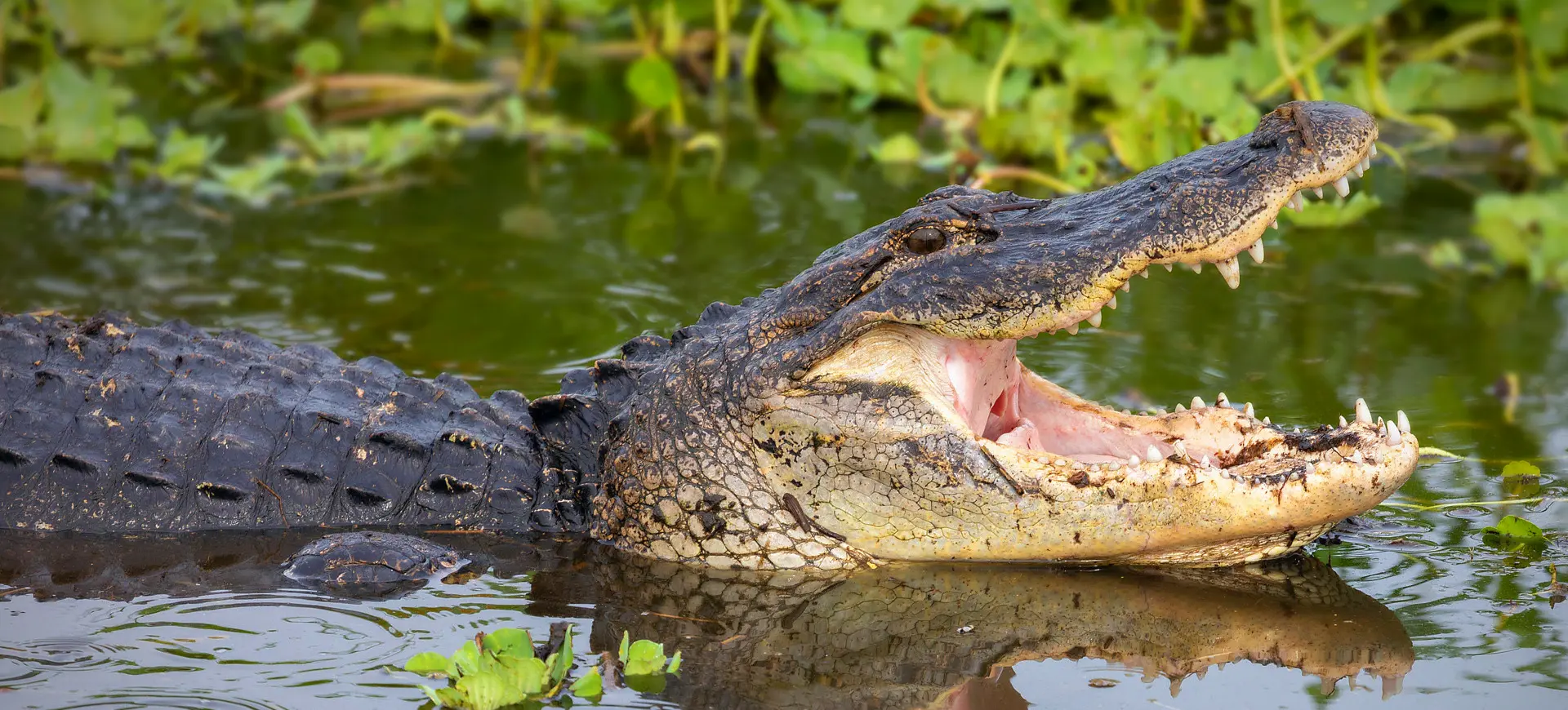Overview
The Spectacled Caiman is a medium-sized crocodilian species native to Central and South America. It is named for the bony ridge between its eyes, resembling a spectacles. The species is highly adaptable and can thrive in various freshwater habitats, including rivers, lakes, and marshes.
The Spectacled Caiman has a broad snout and a body covered in hard, bony plates. It is primarily nocturnal, hunting prey like fish, birds, and small mammals. The species is an apex predator in its ecosystem, playing a crucial role in maintaining the health of its habitat.
While the Spectacled Caiman is not currently considered endangered, it faces threats from habitat loss and illegal hunting. It is often hunted for its skin, which is used in the leather industry, and its meat. Conservation efforts are ongoing to protect this species and its habitat.
Taxonomy
Kingdom
Phylum
Class
Order
Family
Genus
Species
Sub Species
Type
Physical Description:
The Spectacled Caiman has a robust body covered in tough, bony plates known as osteoderms. Its coloration ranges from olive-green to brown, providing excellent camouflage in its natural habitat. The most distinguishing feature is the bony ridge between its eyes, which gives the appearance of spectacles and is the basis for its name.
Adult males can grow up to 8 feet long, while females are generally smaller. The species has a broad, U-shaped snout, which is well-suited for catching various prey. Its eyes and nostrils are positioned on the top of its head, allowing it to see and breathe while mostly submerged.

Lifespan: Wild: ~40 years || Captivity: ~60 years

Weight: Male: 88–154 lbs (40–70 kg) || Female: 66–110 lbs (30–50 kg)

Length: Male: 72–96 inches (183–244 cm) || Female: 60–72 inches (152–183 cm)

Top Speed: 8 mph (13 km/h)
Characteristic:
Native Habitat:
The Spectacled Caiman is native to Central and South America, ranging from southern Mexico to northern Argentina. It is highly adaptable and can be found in various freshwater habitats, including rivers, lakes, and marshes. The species prefers slow-moving or stagnant waters, where it can easily hunt for prey.
The habitat is often characterized by dense vegetation, providing ample cover for the caiman. It is a highly territorial species, with males establishing and defending territories that include multiple females. The species is also known to venture into brackish waters occasionally.
Climate Zones:
Biomes:
Biogeographical Realms:
Continents:
Countries:
Diet:
Diet & Feeding Habits:
The Spectacled Caiman is primarily a carnivore, feeding on prey such as fish, birds, and small mammals. It is an opportunistic feeder, meaning it will eat whatever is readily available. The species uses a “sit-and-wait” strategy, remaining motionless in the water until prey comes within striking distance.
The caiman has a powerful jaw and sharp teeth, allowing it to efficiently capture and consume its prey. It usually hunts at night, taking advantage of its excellent night vision. During the day, it is often seen basking in the sun to regulate its body temperature.
Mating Behavior:
Mating Description:
The mating season for the Spectacled Caiman typically occurs during the dry season. Males become more aggressive and vocal during this period, engaging in displays to attract females. Once a pair is formed, they engage in a courtship ritual that includes mutual touching and vocalizations.
Females build nests out of vegetation, laying between 20 to 40 eggs. The eggs are incubated for about 90 days, after which the young caimans hatch. The mother assists the hatchlings in reaching the water and remains protective of them for several weeks.
Reproduction Season:
Birth Type:
Pregnancy Duration:
Female Name:
Male Name:
Baby Name:
Social Structure Description:
Spectacled Caimans are social animals that live in groups, often consisting of one dominant male and multiple females. The dominant male is responsible for defending the territory against intruders. Within the group, there is a hierarchy based on size and age, with larger and older individuals generally being more dominant.
During the breeding season, the social structure becomes more complex as males compete for mates. Aggressive displays and vocalizations are common during this period. Despite the competition, the group has a sense of community, especially regarding collective activities like hunting and basking.
Groups:
Conservation Status:
Population Trend:
The Spectacled Caiman is currently listed as Least Concern by the IUCN, indicating a stable population. However, the exact numbers are not well-documented due to the species’ wide distribution and elusive nature. Millions of individuals are estimated to exist in the wild, making it one of the most numerous crocodilian species.
Despite its stable status, the Spectacled Caiman faces threats from habitat loss and illegal hunting. Agriculture and development are encroaching on its natural habitats, leading to fragmentation. Conservation efforts focus on habitat preservation and anti-poaching measures to ensure the species’ long-term survival.
Population Threats:
Habitat loss due to agriculture and development is a significant threat to the Spectacled Caiman. Drainage of wetlands for agricultural use directly impacts the species’ natural habitat. Additionally, illegal hunting for its skin and meat poses a risk, although this has decreased due to conservation efforts and regulations.
Pollution is another concern, as it affects the water quality in which the caiman lives. Chemical runoff from agriculture can lead to the accumulation of toxins in the species, affecting its health and reproductive capabilities. These combined threats require ongoing conservation efforts to mitigate their impact.
Conservation Efforts:
Conservation efforts for the Spectacled Caiman primarily focus on habitat preservation and anti-poaching measures. Protected areas have been established in various parts of its range to safeguard its natural habitat. Additionally, international trade in caiman products is regulated to curb illegal hunting.
Education and awareness programs are also being conducted to inform local communities about the importance of this species. These efforts aim to reduce human-caiman conflicts and promote coexistence. Enforcement of existing laws and regulations is crucial for effectively conserving this species.
Additional Resources:
Fun Facts
- Spectacled Caimans can stay submerged for up to 30 minutes.
- They have a third eyelid that helps protect their eyes while underwater.
- The species is known for its “death roll,” a technique to subdue large prey.
- They have excellent night vision, which aids them in hunting.
- Spectacled Caimans are known to eat fruit occasionally, making them opportunistic omnivores.
- They can tolerate salt water and are sometimes found in salty environments.
- The species can survive in water with low oxygen levels by slowing its metabolic rate.
- Spectacled Caimans have a vocalization known as a “grunt,” used for communication within the group.
- They travel long distances during the wet season in search of new habitats.
- Despite their fearsome appearance, they are generally shy and avoid human contact when possible.











